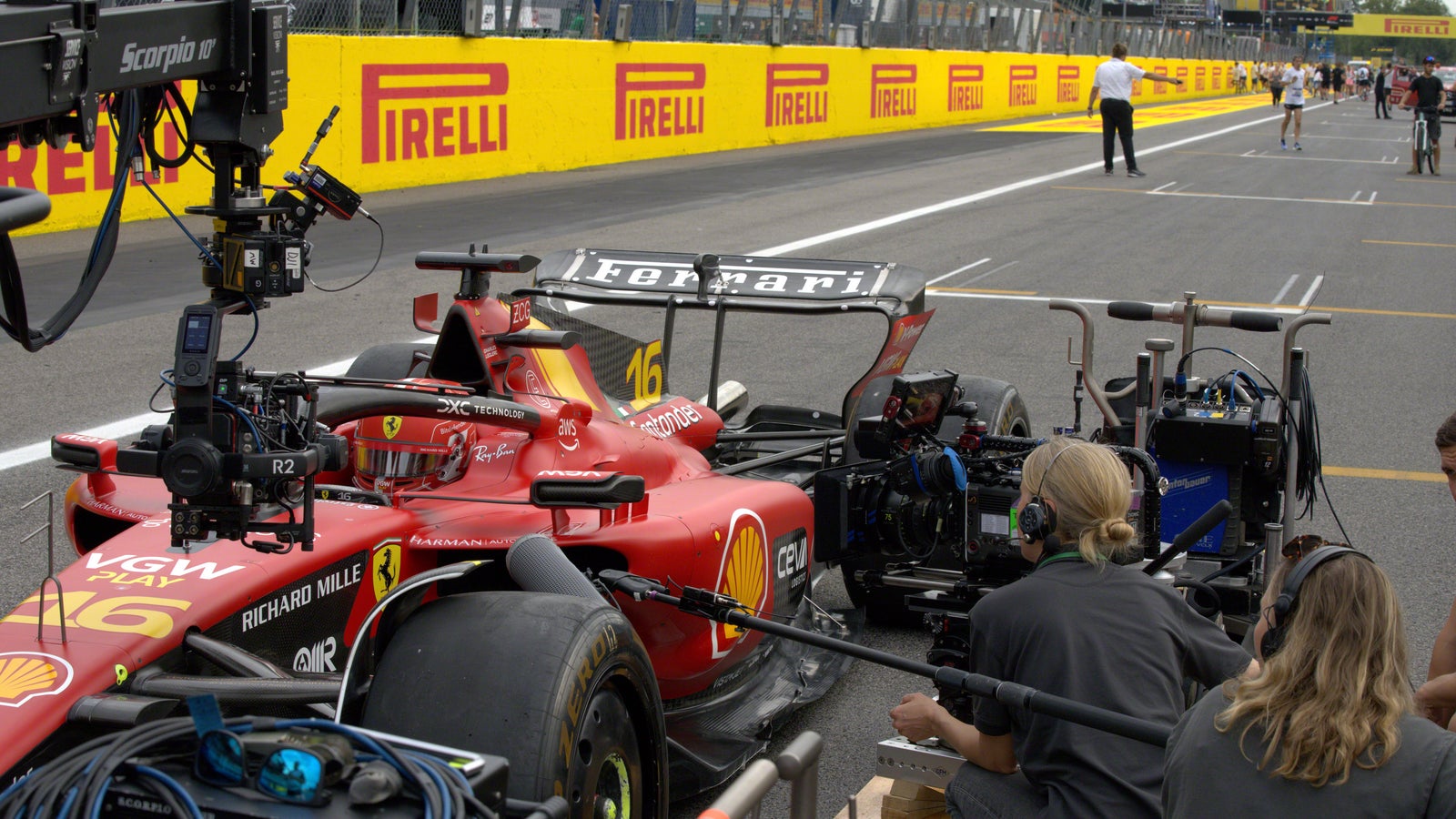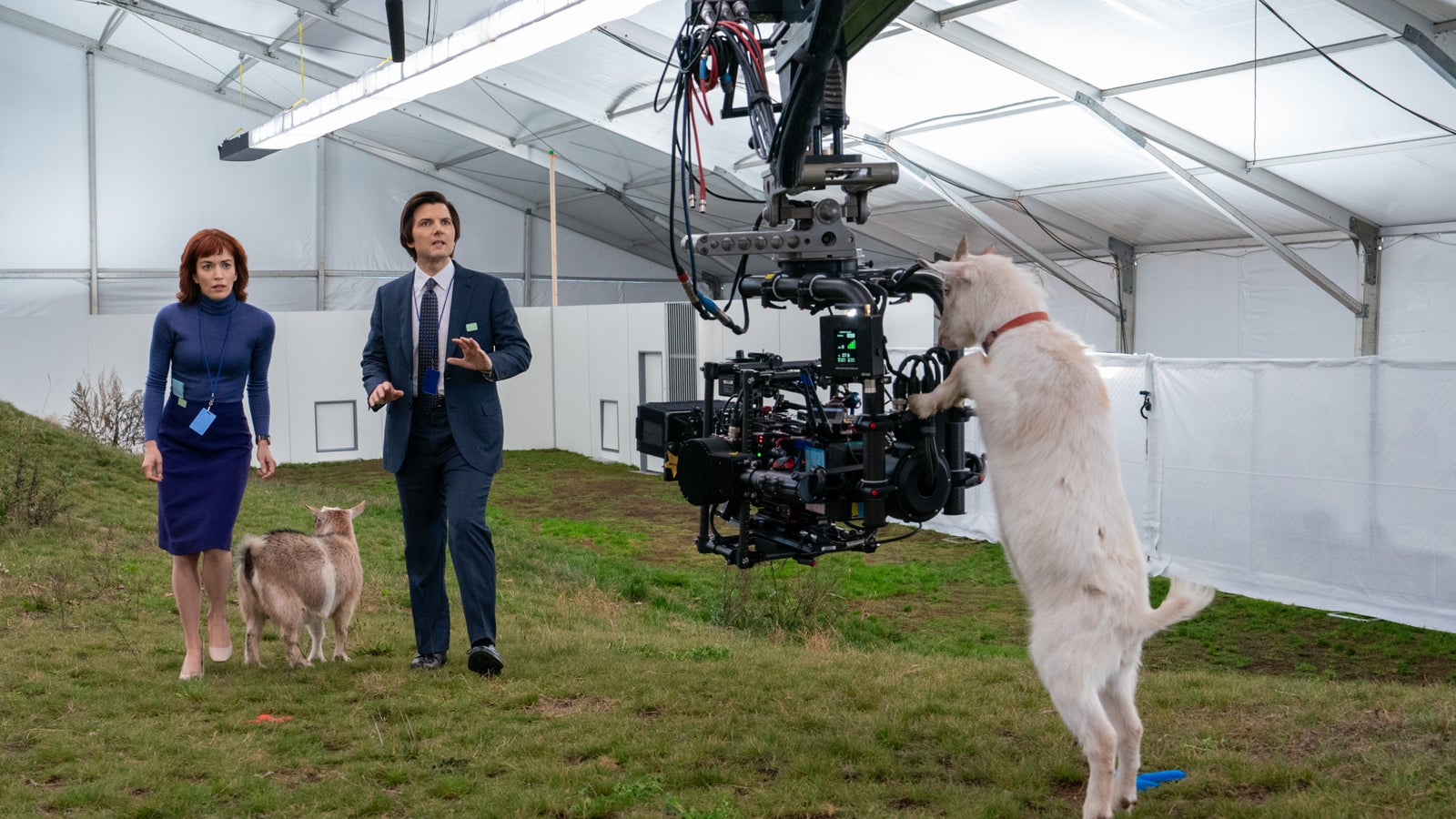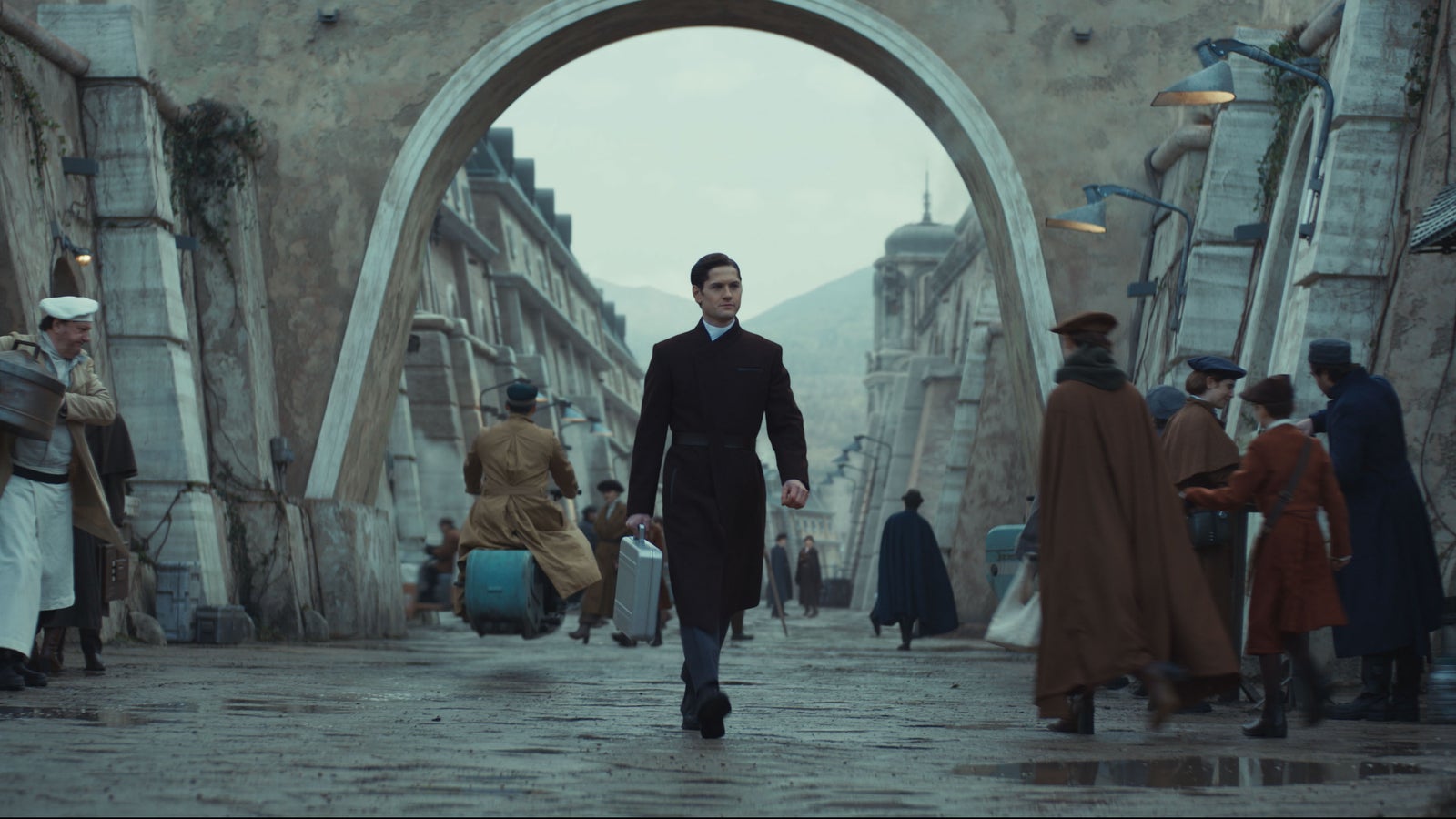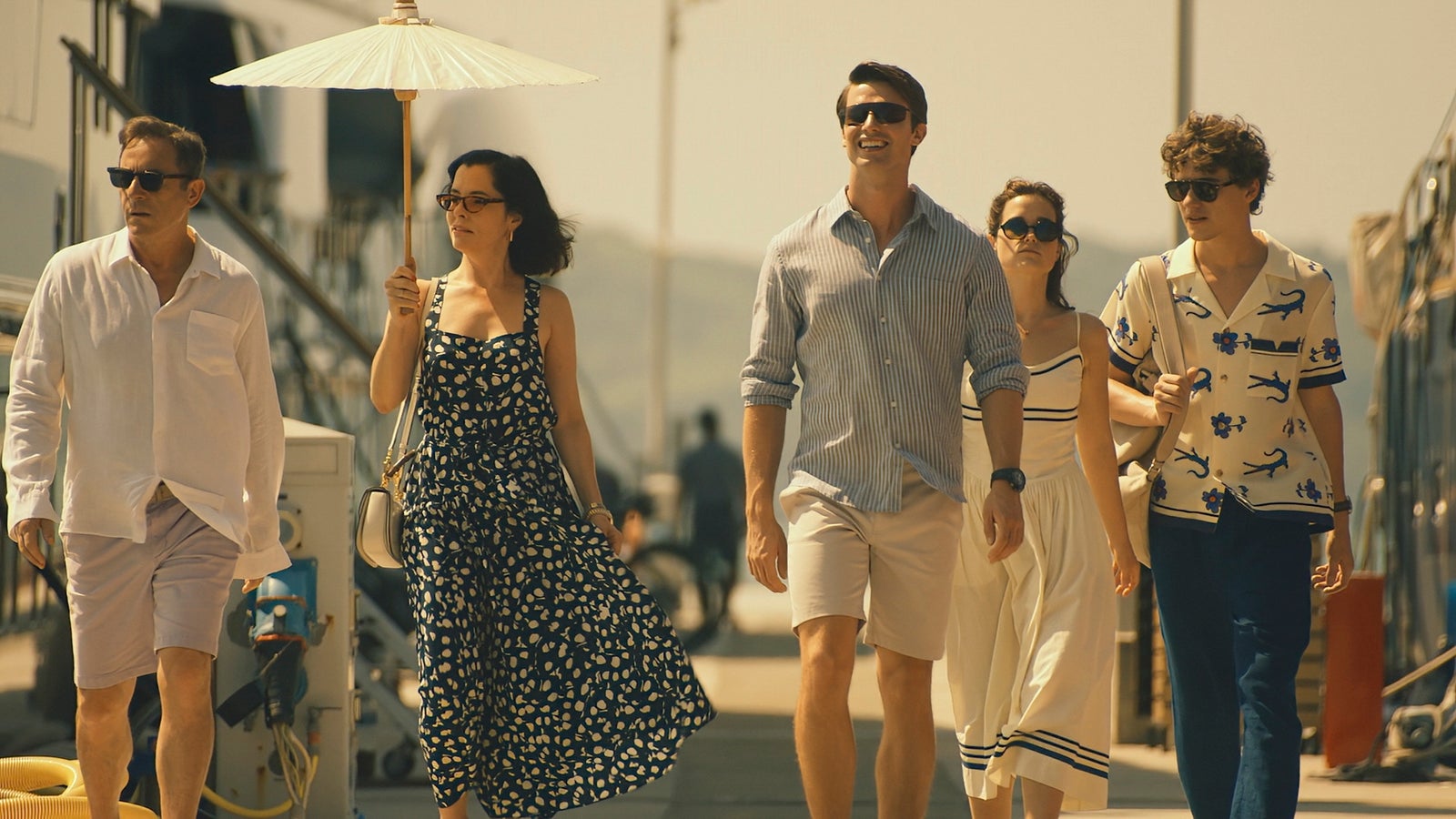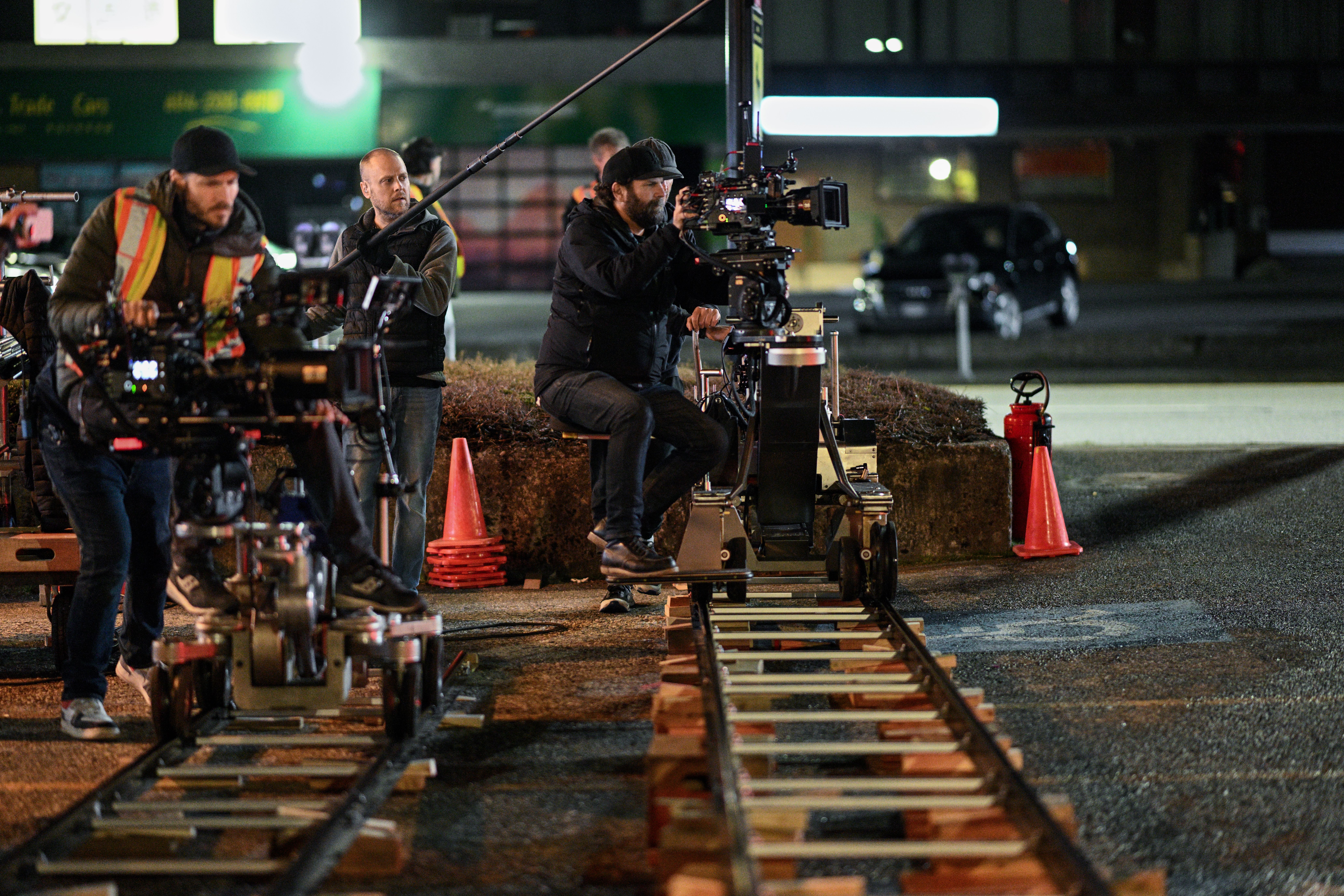
08-22-2025 - Filmmaker Interviews, Behind the Scenes Video
Behind the Scenes with Sam McCurdy ASC and Francois Dagenais CSC of Apple TV's Smoke
By: Yaroslav Altunin
Few projects can push a story into otherworldly places and still be immersive. Whether you're balancing daring stunts and intricate fight sequences or crafting a show entirely about arson, safety and stunning imagery must go hand in hand.
For Smoke, a new Dennis Lehane series for Apple TV+, intimate moments between characters, natural lighting, and blazing fire scenes were woven together to make compelling drama and unique compositions.
After the look of the pilot episode was set by Sam McCurdy, ASC, BSC (see the video below to hear from Sam the rules he established for the series), the story was captured by DP's Francois Dagenais, CSC, and Todd McMullen on the Sony VENICE 2. The series used elevated stylistic elements, pulled from iconic films of the 1970s, and documentary photography to explore the world of arson.
Sony Cine sat down with Dagenais to learn more about his creative approach to capturing the show, how he overcame the challenges of lighting and shooting fire, and how the Sony VENICE 2 brought all the elements together.
Go behind the scenes of Smoke and learn how DP Sam McCurdy ASC set the rules for the series
Filmmaker Interview: Francois Dagenais - Finding the Visual Language of Smoke
Inspired by Firebug, a podcast about the crimes of arsonist John Leonard Orr, the story of Smoke has its foundation in the likes of Black Bird, The Wire, and a series of novels that have become iconic films. Created by Dennis Lehane, the series brought on directors Kari Skogland, Jim McKay, and Joe Chappelle to weave an intricate tale of crime.
While Sam McCurdy shot the pilot episode with Skogland directing, Dagenais and DP Todd McMullen would join the series to carry on the visual language of the show, with Dagenais and Chappelle partnering to shoot episodes 2, 3, 4, 7, and 9.
"Dennis Lehane really likes documentary still photography, like, from the Magnum agency type where things are naturalist and shot without any lights, but still feel very contrasty," Dagenais said. "The thing that Dennis always said was to always be bold in our choices, that the show should stand out and be bold."
"Dennis' favorite film is The French Connection, so there was definitely a feel for the 70s," Dagenais said. "But then we still needed to find a way to express that in a modern way."
Mixing these elements would be the first challenge for Dagenais and Chappelle. To marry a stylistic and natural world, the creative duo leaned on that inspiration from early documentary and street photography.
"As much as Dennis tells you to be bold when you read the script and the dialog, it is very grounded in reality," Dagenais said." But at the same time, there are some dramatic turns, and sometimes it's even operatic, so you have to find creative ways to express that."
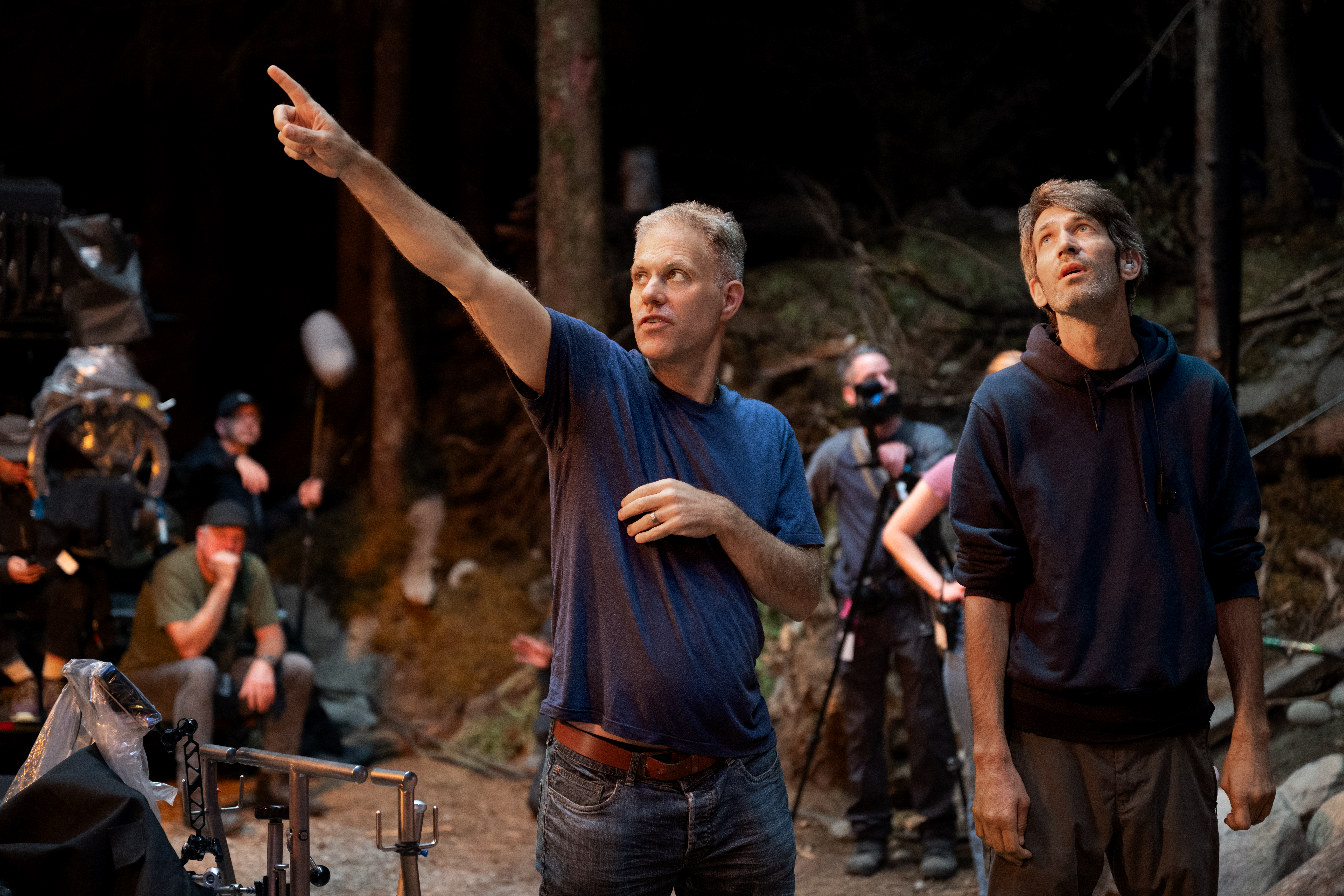
Filmmaker Interview: Francois Dagenais - Capturing Smoke on the Sony VENICE 2
Using Lehane's inspiration from photography and documentary still photographers, Dagenais crafted a look based on natural lighting, often lighting with limited sources. Yet to balance shadows, to shoot with deep focus, and to capture vivid fire sequences, the cinematographer leaned on a camera he had never used before—the Sony VENICE 2, which was paired with Hawk Class-X anamorphic lenses.
"I was impressed with the Sony VENICE 2 by how well we could see," Dagenais said. "There's quite a few scenes—on the streets, at night—that were dark. Of course, we had lighting, but we wanted the depth so those lights could be picked up in the distance.
"You want to be able to see in the shadows, and you want those practicals or those streetlamps to not overpower the shots, and the VENICE 2 allowed us at night to do that."
The series was shot throughout July, so day sequences were captured in very harsh sunlight. To find the sweet spot between proper exposure and the show's visual language, Dagenais shot actors in shadow for dramatic compositions. Using the feature set of the VENICE 2, the cinematographer also found subtle ways to capture the background elements.
We were still shooting in July, and you can imagine in the summer, in the middle of the day, it's a very harsh sun," Dagenais said. "But we still want that dramatic lighting, almost a bit of film noir lighting, so you want the actor in the shadow to create contrast but also have the people in the background exposed."
"I found that the VENICE 2 was able to handle that from a technical point of view, but also from a creative and aesthetic point of view. It gave a texture that felt sensuous and organic at the same time."
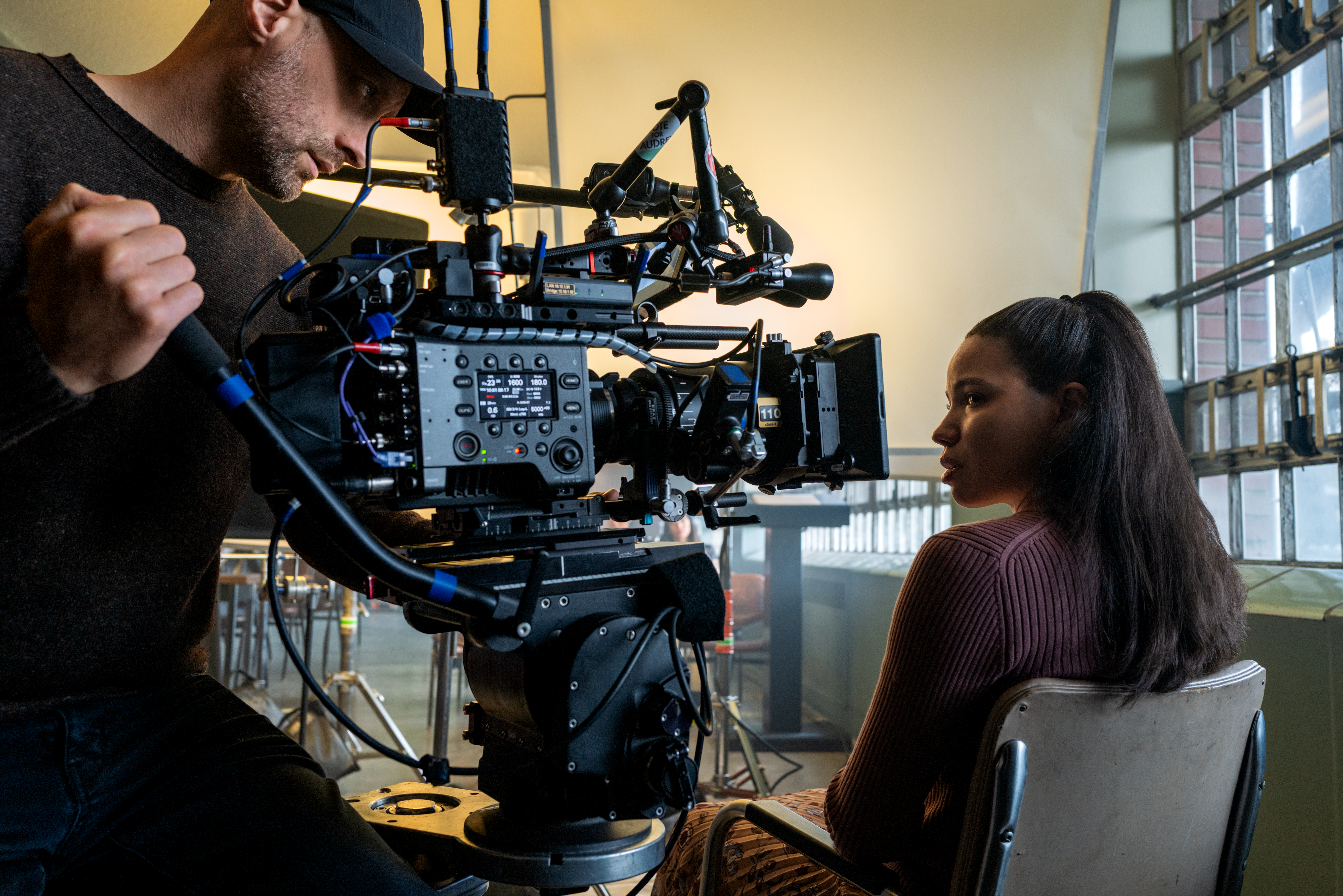
To capture these different lighting scenarios, Dagenais utilized the VENICE 2's high sensitivity. Whether shooting at night or during the day, ISO became a paintbrush, and Dagenais became the painter.
"[The VENICE 2 has] a huge latitude in the color, especially at night," Dagenais said. "In mixed light situations, you were able to pick up the color, which sometimes, I feel, you lost. The detail in the color and remaining true to the nuance of the color."
"We were at base ISO 800, but shooting at 1600, and sometimes we'd also go to ISO 3200. Even in the daytime, we would try to remain at ISO 1600 and then use NDs and shoot a fairly wide depth of field."
Shooting at these high sensitivities allowed Dagenais to embrace the mixed lighting scenarios, offering creative opportunities for dramatic moments.
"I really liked the scenes that we shot at ISO 3200," Dagenais said. "It allowed me to shoot with more practical lights. We did an amazing scene where there was a lamp above a stove between the actors and we just bounced that light source for that scene. Everybody loved it and the actors had a lot of freedom."
"The reason that scene looked so good was because of the higher sensitivity. So, the VENICE 2 has actually helped me light in new ways and make it look good."
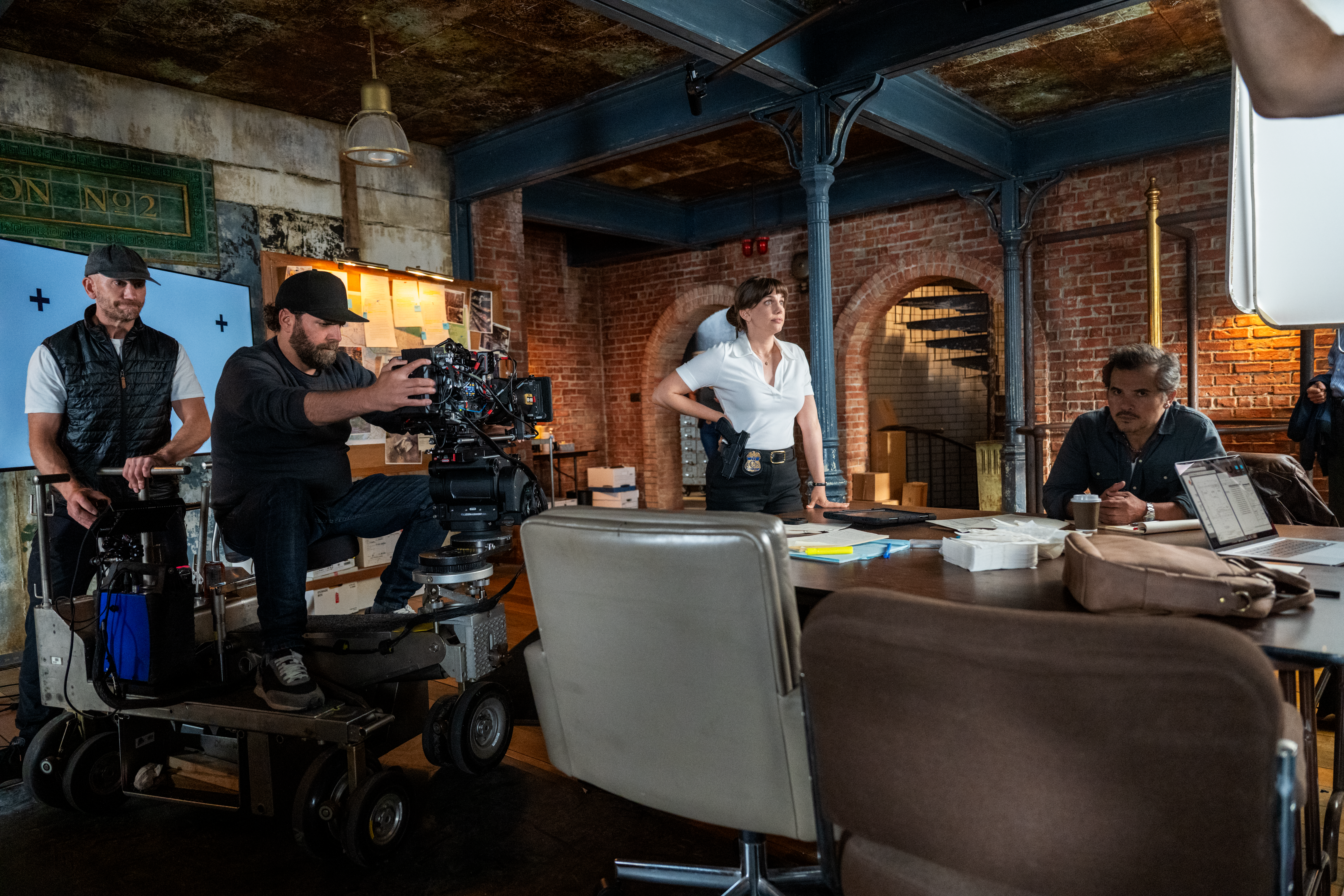
Filmmaker Interview: Francois Dagenais - Embracing the Fire of Smoke
A story about arson could not thrive cinematically without fire. On Smoke, a combination of real fire, VFX elements, and sequences shot in the volume brought intensity and heat to the story. These elements were weaved together with the VENICE 2 sensor, balancing exposure in the shadows with the light of the fire.
"There was a lot of natural fire," Dagenais said. "Sometimes it was augmented with VFX, but there was quite a lot of fire in the show."
"One of the big challenges was how the fire would read on camera, how much detail you would have, and how much color you would have of the fire."
Shot on a modified sound stage with purpose-built ventilation, Dagenais shot extensive fire sequences. Making it safe and repeatable was one challenge but capturing it on camera was something else entirely.
"At some point in the course of the season, we ended up going to a volume where the fire was actually VFX," Dagenais said. "It was very crucial that the VFX fire looked realistic and how it would translate on camera."
"It's such an important part of the story. Those scenes have to work and be stunning, and you have to believe it. Otherwise, you won't feel engaged with the show."
By shooting at a base ISO and then rating it higher, the creative team could capture the nuances of each element without losing detail in other parts of the image.
"The VENICE 2 allowed me to take more risks and be more creative and bold because I knew that the curve of the camera was my safety net."
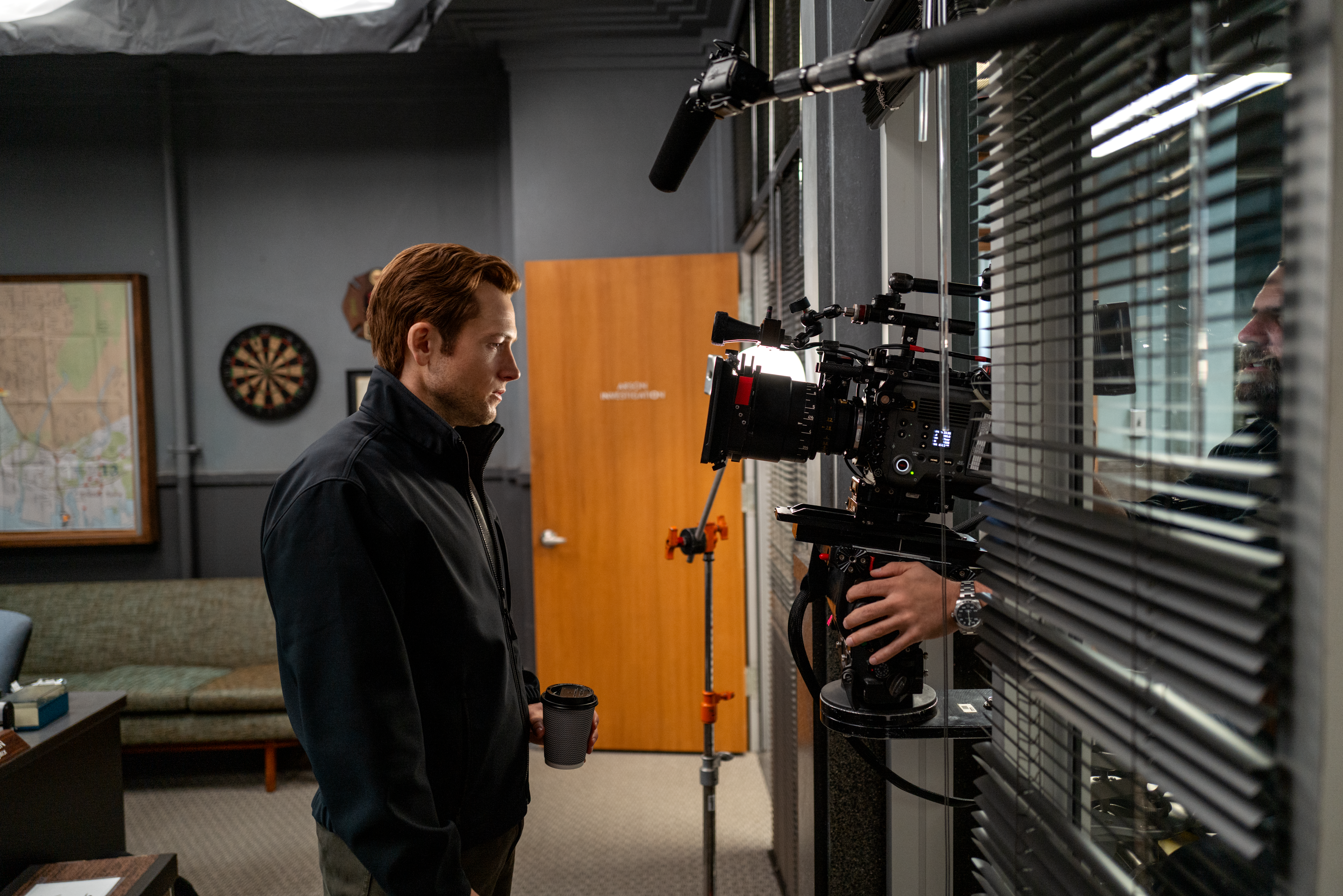
Filmmaker Interview: Francois Dagenais - Where there's Smoke, there's Fire
Crafting a show by the likes of Dennis Lehane takes a steady creative hand that must be ready for explosive reveals. For Dagenais, the challenges he faced forced him to push boundaries while remaining within the borders of a set visual language.
"How far can you push but still remain naturalistic? How far can you depart from the look and still be a part of the story?" Dagenais explained. "How much do you need to change the look during the course of the season and still remain cohesive as the story evolves, the characters evolve, and locations change."
"We were always very conscious to remain cohesive. That it still felt like the same show, and that was really something we had to always keep in mind."
To see Dagenais' work, you can stream Smoke on Apple TV+. Click here to learn more about the Sony VENICE 2 and the other cameras in the Sony Cinema Line.
